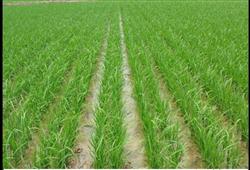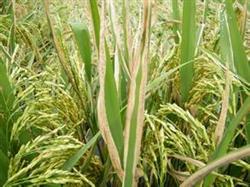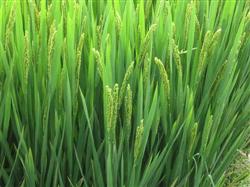What is the cause of Tillering death in Rice and Wheat

Q: I am from Sihong County. Here, many of the tillers of wheat do not grow and eventually shrink and die, and so does rice. In addition, there are several grains missing at the base of the wheat ear, or the branchlets at the base of the rice ear do not bear particles as if they had been rolled. What is the reason for this? Answer: a large number of tillers died in the middle and later stages of wheat and rice growth, which is usually a normal phenomenon. Generally speaking, the small tillers of wheat and rice with less than 3 leaves at the beginning of jointing can not form spikes and will die quickly after jointing. These tillers are invalid tillers. When the number of peak seedlings is too large, when the field population is too large, many large tillers with more than 3 leaves at jointing can not form spikes, and eventually die, which is also an ineffective tiller. In the process of cultivation, the population of wheat and rice should be controlled at an appropriate level according to local conditions, and the population in the middle and later stage should not be too large, otherwise too many ineffective tillers will not be conducive to large spike and high yield, and it is easy to cause lodging in the later stage. In general, the number of peak seedlings of wheat should not exceed 500000 per mu, and the number of spikes per mu should be about 350000; the number of peak seedlings of medium japonica rice should not exceed 300000 and 220000 ~ 240000 per mu. The spikelets in the lower part of the rachis of wheat and rice ears differentiate and develop late and are at a nutritional disadvantage in light, density and fertilizer. When temperature and other conditions are not suitable for the growth and spike differentiation and development of rice and wheat, these spikelets are often underdeveloped.
- Prev

Analysis on the causes of rice bacterial blight and its control techniques
The pathogen of rice bacterial blight is Xanthomonas oryzae, bacteria, Xanthomonas genus. Bacterial blight is one of the main diseases of rice. Once it occurs, the yield can be reduced by 10% in general and 50-60% in serious cases. Therefore, it is very important to strengthen the control of bacterial blight. 1. Causes of disease 1.1 Incidence and climatic conditions...
- Next

Strengthening the Prevention and Control of Diseases and insect pests in the Middle and later stage of Rice
At present, it is the booting stage of rice. in order to conscientiously do a good job in the prevention and control of diseases and insect pests in the middle and later stages of rice and ensure the increase of rice production and income this year, Shuangfengqiao Street has recently taken effective measures to strengthen the prevention and control of diseases and insect pests in the middle and later stages of rice. Because last winter this spring is a warm winter year, rice stem borer, rice leaf roller, rice planthopper.
Related
- The first cup of black tea in spring, the flavor and history of tea gardens in Kenya, Africa
- The computer can not only choose potatoes, but also grow tea rice. AI will grow winter oolong tea champion.
- It is not only the inflated tea bitten by insects, but also engraved with the four seasons tea in Beipu.
- The Oriental Beauty Tea Festival in Zhuxian County takes the stage at the weekend to experience the plus-size feast of oil tea.
- & quot; Oriental Beauty Tea & Exploration of Emei in Hsinchu, the hometown of quot;
- The new variety of strawberry "Tainong 1" dessert is the first choice with mellow aroma. Crimson gorgeous
- History of Tea in Taiwan: from Wild Inner Mountain to Export Tea Garden
- Two types of Taiwan Oriental Beauty Black Tea won the British three-Star Award for Childhood Tea Xiang Zhang Jiaqi changed from pilot to champion tea maker.
- Banana species and varieties: the planting history of Taiwan Xianren banana and dwarf banana is long, is banana disease resistant?
- Coffee planting Technology: Qianjie Coffee from Seedling to harvesting

